Germain’s Peacock-pheasant is one of the star attractions of Cat Tien NP.
In particular, this is because it readily comes to the Cat Tien hides and can be seen well there despite the eBird remark that the species is “generally shy and reclusive and very difficult to see well.”

The name commemorates Louis Rodolphe Germain (1827–1917), a French Army veterinarian who when based in Indochina sent a specimen to a museum in Paris.

The Green-legged Partridge is both an old breed of chicken indigenous to Poland (main Wikipedia entry) and an Indochinese partridge species (alternate Wikipedia entry, and the bird shown below).
Similar to the peacock-pheasant, it is “very difficult to see in general; most likely encountered at staked-out blinds” (eBird). Though eBird seems to be somewhat disappointed by the species, noting that it is a “cryptically-colored ground-dweller without the bright colors and bold head patterns boasted by many of its relatives”

One of the nest predators of this partridge – the Northern Treeshrew – is shown at the end of this post.

The bulbuls around Cat Tien are mainly the Stripe-throated Bulbul …


… and the Streak-eared Bulbul.


Siberian Blue Robins are fairly easy to see in Shanghai during migration – but it is nice to meet them in their winter quarters as well.



For reasons nobody seems to know, the Common Emerald Dove is the state bird of the Indian state of Tamil Nadu (source). Pretty useless information, I know.

And now for something completely different – some bird photos. Of Indochinese Blue Flycatcher …



… and Black-winged Cuckooshrike.



eBird calls the Grey-faced Tit-babbler a dull brown babbler.

So, maybe William Vallandigham Kelley (1861-1932) would not be too pleased that they named the bird Mixornis kelleyi. But by then (in 1932), maybe all the good birds such as Germain’s Peacock-pheasant already had names …
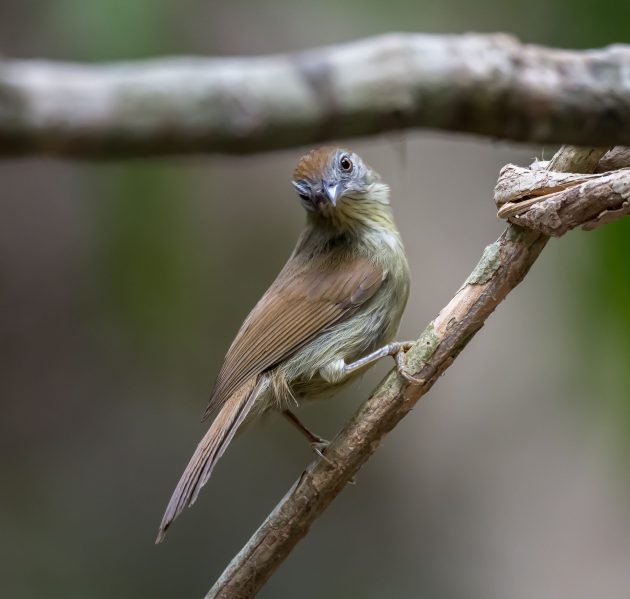
Kelley was a Chicago manufacturer and a sponsor of the Field Museum of Natural History’s 1928 expedition to Eastern Asia. If you want to visit him, you can do so at the Lake Forest Cemetery in Illinois.
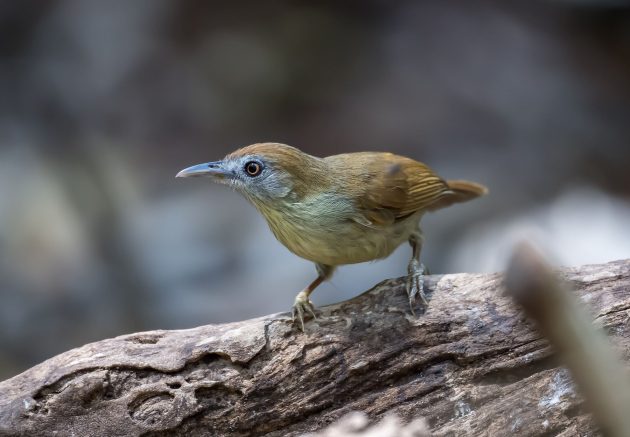
I am sure I have written the same thing before, but apparently the person who gave the name to the Bronzed Drongo did not have any clue about what bronze color looks like.

Unfortunately, I did not see a Bronzed Drongo nesting – it makes for rather cute photos, as this example shows.

Apparently, the body of the Slaty-legged Crake is laterally compressed so they can pass quietly through thick vegetation (source).
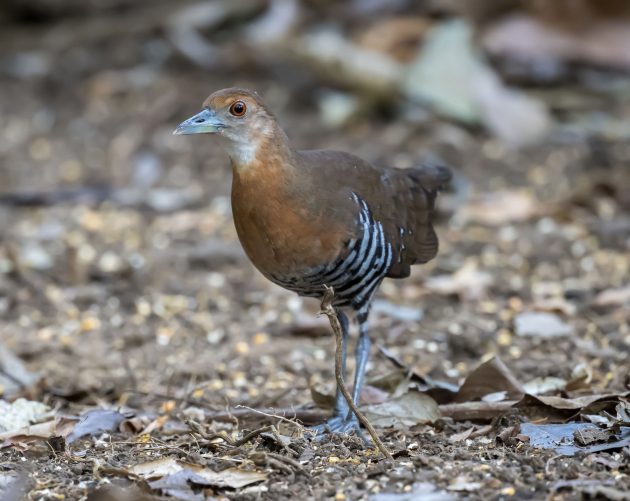
The species played a cameo role in an edition of the Philippine Journal of Veterinary Medicine when a new species of trematode parasite was discovered from it.

The Chestnut-headed Bee-eater has its fans at eBird, which calls it a “beautiful, dainty bee-eater”.

The scientific name Merops leschenaulti commemorates Jean Baptiste Louis Claude Théodore Leschenault de la Tour (1773-1826), a French botanist and ornithologist who presumably throughout his life cursed his long name whenever he had to fill out official forms.

The Wikipedia entry on him is rather critical of his work ethic. As chief botanist on Nicolas Baudin’s expedition to Australia between 1800 and 1803, he collected many new specimens “though Baudin’s journal suggests that he did not work particularly hard; apparently the poorly educated gardener’s boy Antoine Guichenot collected more plant specimens than Leschenault did, and gave them more useful labels.”

It’s a jungle out there – nobody knows that better than the Red Jungle Fowl.

Indeed, the most dominant cocks and hens produced most of the adults of succeeding generations. In one study, the genetically effective breeding size of the population was only about 13% of the total number of adults (source).

Both sexes of Red Junglefowl are promiscuous. Males aim to attract females and repel other males, while females aim to mate only with their preferred males (source).

Red Junglefowl are the ancestors of domesticated chicken – how this happened is described here.

Apparently, there is a close link between rice cultivation and the domestication of chickens – quite probably this only happened after humans began cultivating rice within range of the wild red jungle fowl.

One thing that happened once the Red Junglefowl got domesticated is that its brain size shrunk – apparently brain size reduction is a common trait in domesticated species (source).

At least in the chickens, the shrinkage may be a result of humans selecting those individuals for domestication which have the lowest level of fear of humans – which happen to be the ones with the smallest brains (source).

Finally, 3 of the about 235 woodpecker species in the world. Starting with the Laced Woodpecker.

Next, the Common Flameback.

greenmatters.com claims that woodpeckers might represent spiritual protection, which makes me rather a bit weary of them as I am not too fond of spirituality.

If you need more of this mumbo-jumbo, go to a website named whatismyspiritanimal.com and learn things like “Native Americans tell us that Woodpecker represents journeying into the astral plane”.

In dreams, woodpeckers offer a lot of flexibility, so you can pretty much interpret an appearance in any way you want: “Woodpeckers in dreams can indicate anything from mystery and magic to wisdom and opportunity” (source). That should make woodpeckers rather popular with dreamers and people who interpret dreams.

Finally, the Lesser Yellownape.

Did you ever build a house and then had somebody else move in against your will? I hope not … But as cavities are in great demand for nesting by other cavity nesters, woodpeckers face competition for the nesting sites they excavate from the moment the hole becomes usable (source).
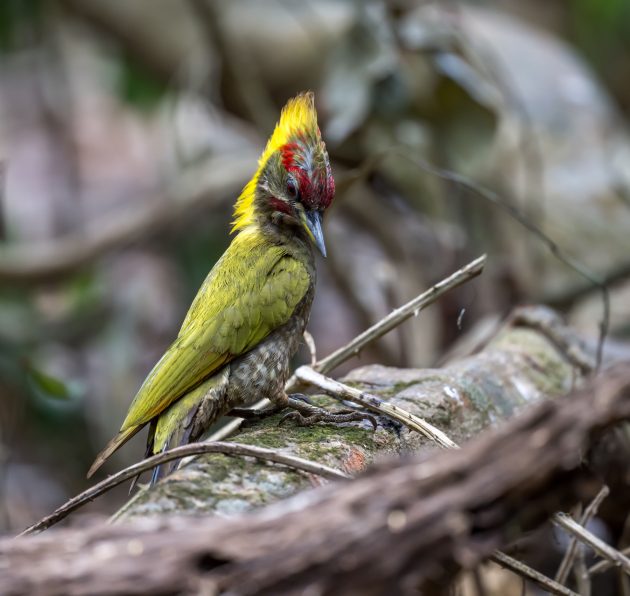
In Ovid’s Metamorphoses, the witch Circe turns a very sexy man named Picus into a woodpecker when he refuses to be disloyal to his wife and turns Circe away. Hell hath no fury …

In October 2022, a campaign named “Woodpecker” was started in China’s Shandong province. The campaign asked locals to find incorrect English translations in public facilities and inform the authorities about them. The top 10 “woodpeckers” received gifts (source).
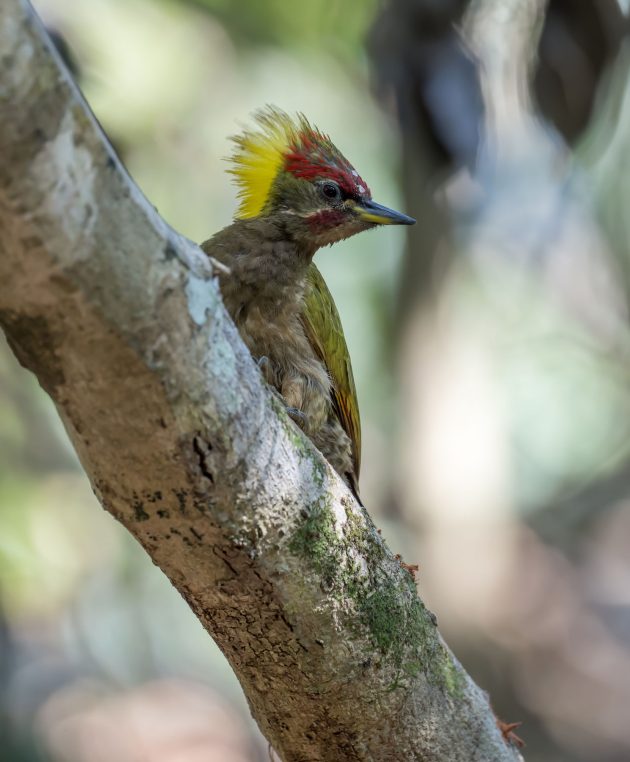
Other animals seen at Cat Tien included a treeshrew – the Gollum of the mammal world – …

… and the critically endangered Black-shanked Douc Langur.


All photos taken at Cat Tien in late March 2024.
Source link

